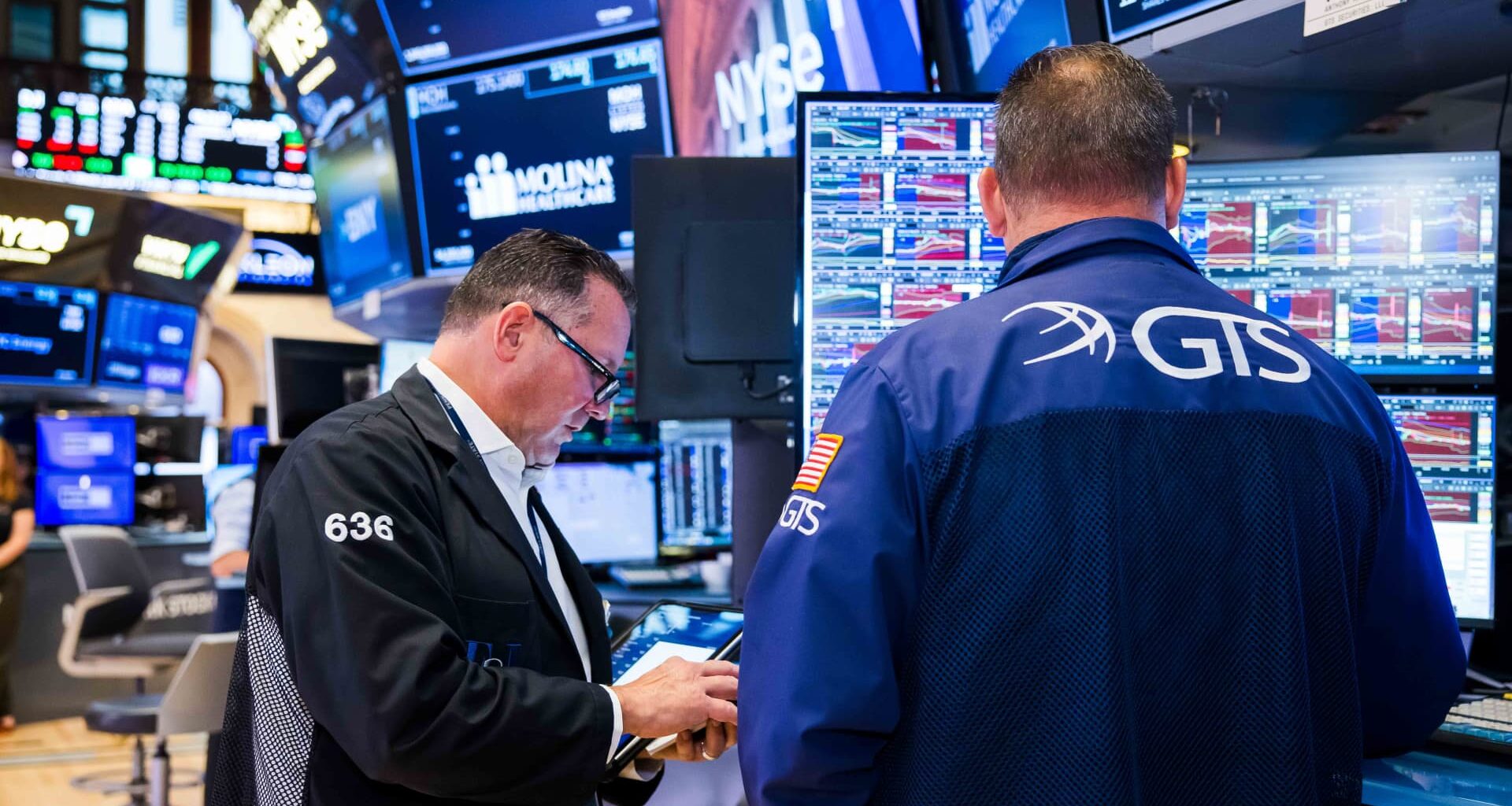(These are the market notes on today’s action by Mike Santoli, CNBC’s Senior Markets Commentator. See today’s video update from Mike above.) With stocks, bonds and gold all entering the week riding mature uptrends propelled by well-understood drivers, hitting some widely watched targets, encountering seasonal headwinds and facing a lull in key fundamental catalysts, all markets retraced a bit. For now, it looks more like trend fatigue than material impairment. Stocks are churning moderately lower, as the ongoing reassessment of the pace, cost and wisdom of the hundreds of billions in announced AI infrastructure projects spurs some profit-taking in semis and related AI enablers. The S & P 500 hit a record intraday high Monday just under 6699 and then on Tuesday at 6699.52, implying willing sellers were waiting at 6700, for whatever reason (or none at all). The index is a mere 1% below that level and even if it had its first 3% retreat since May it would simply return the index to the 6500 level it first hit in late August and last touched a couple of weeks ago. We’ve had gut checks to the AI trade plenty of times in the past few years, which all proved buying opportunities for the agreed-upon winners in the group, of course. While Nvidia is trading soft, well below its price before its recent earnings report four weeks ago, and Micron was down almost 3% Wednesday on a stellar quarter and guidance, the pullbacks are hardly cutting into muscle given the strength of the rallies over the past year. This time, arguably, more is at stake for the broader tape, given how reliant the market has been on this theme. JP Morgan Asset Management’s big-picture strategist Michael Cembalest in a new research piece points out, “AI related stocks have accounted for 75% of S & P 500 returns, 80% of earnings growth and 90% of capital spending growth since ChatGPT launched in November 2022.” The chatter about a potential bubble forming either now or in the future has become quite loud. I pointed out in my weekend column that the comparisons to the late-’90s mania were increasingly being made with warmth (greed?) rather than alarm, and a focus on how much more potential upside there would be if the present run were to match the prior one. It’s dangerous to assume there’s any such preordained path. But it’s telling that in order to make a case for truly compelling upside from the current starting point of valuation, index concentration or public equity exposure, one needs to project something close to a runaway euphoric phase coming along pretty soon. A key distinction, still, is the favorable supply/demand dynamic for equities. The IPO issuance tally continues to lag total share buyback volumes. In 1999 and 2000, new offerings swamped the market’s ability to absorb it, cutting off the flow of IPO proceeds to Internet companies that were meant to be the revenues of bigger tech companies. Interestingly, though, brokerage strategists’ index targets continue to lag the index itself, professional investors are not yet maxed out on equity risk and even the retail-trader frenzy is short of the 2021 binge on unprofitable tech stocks and meme plays. None of them are conveying imminent danger. And the equity market’s rotational choreography remains active, with laggards such as energy and some other commodity stocks finding some relief. Gold , down 1.5%, could be succumbing to severe overbought readings and a recent change in character from “prudent hedge against flight from dollar assets and fiscal looseness” to a pure crowded momentum chase. U.S. dollar up and Treasury yields rising just about to post-Fed-meeting highs , as the market is slightly less sure of two further, quarter-point Fed rate cuts this year. Neither move is enough to disturb the broad picture of somewhat lower rates and a still-decent economy — yet.

